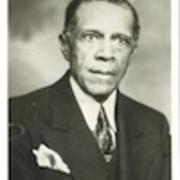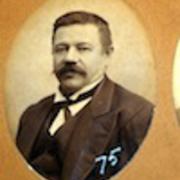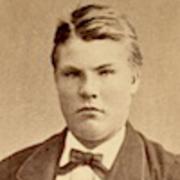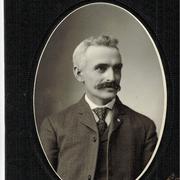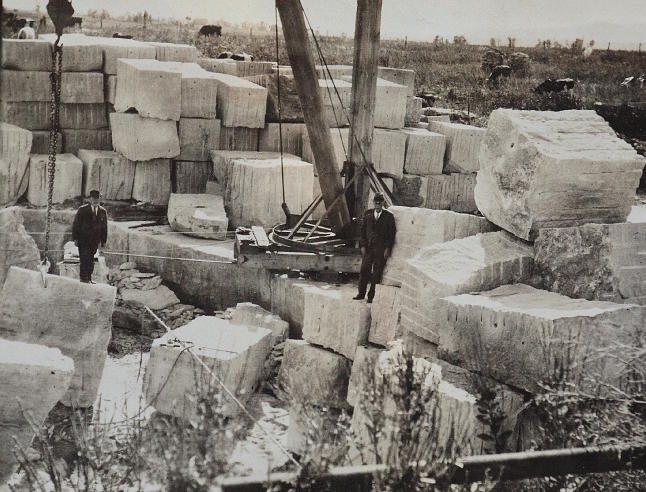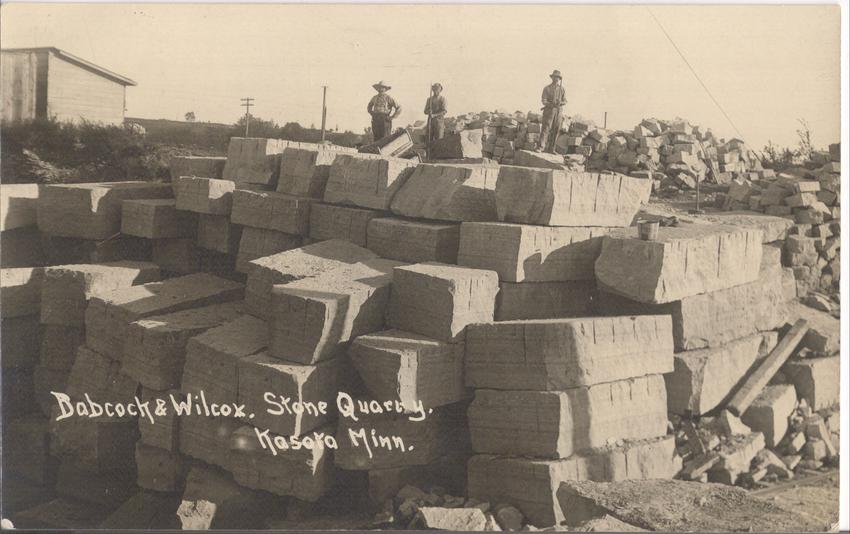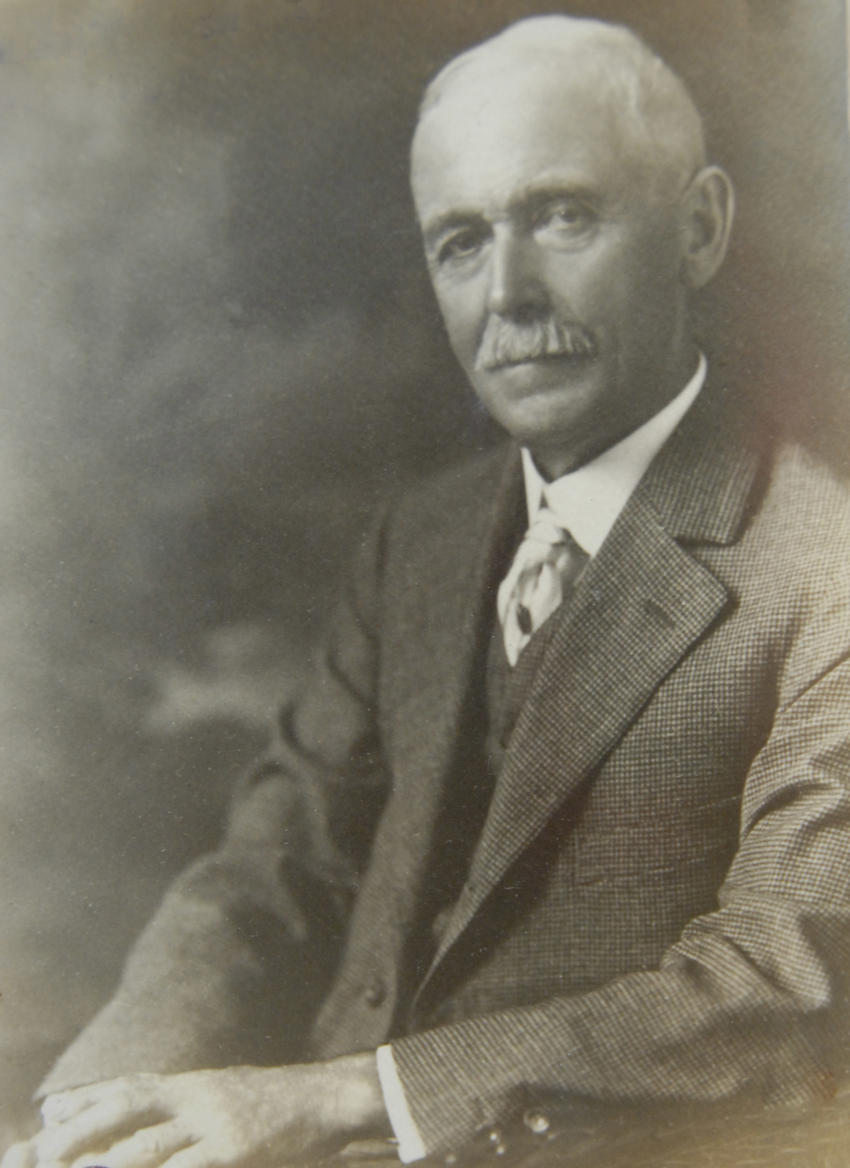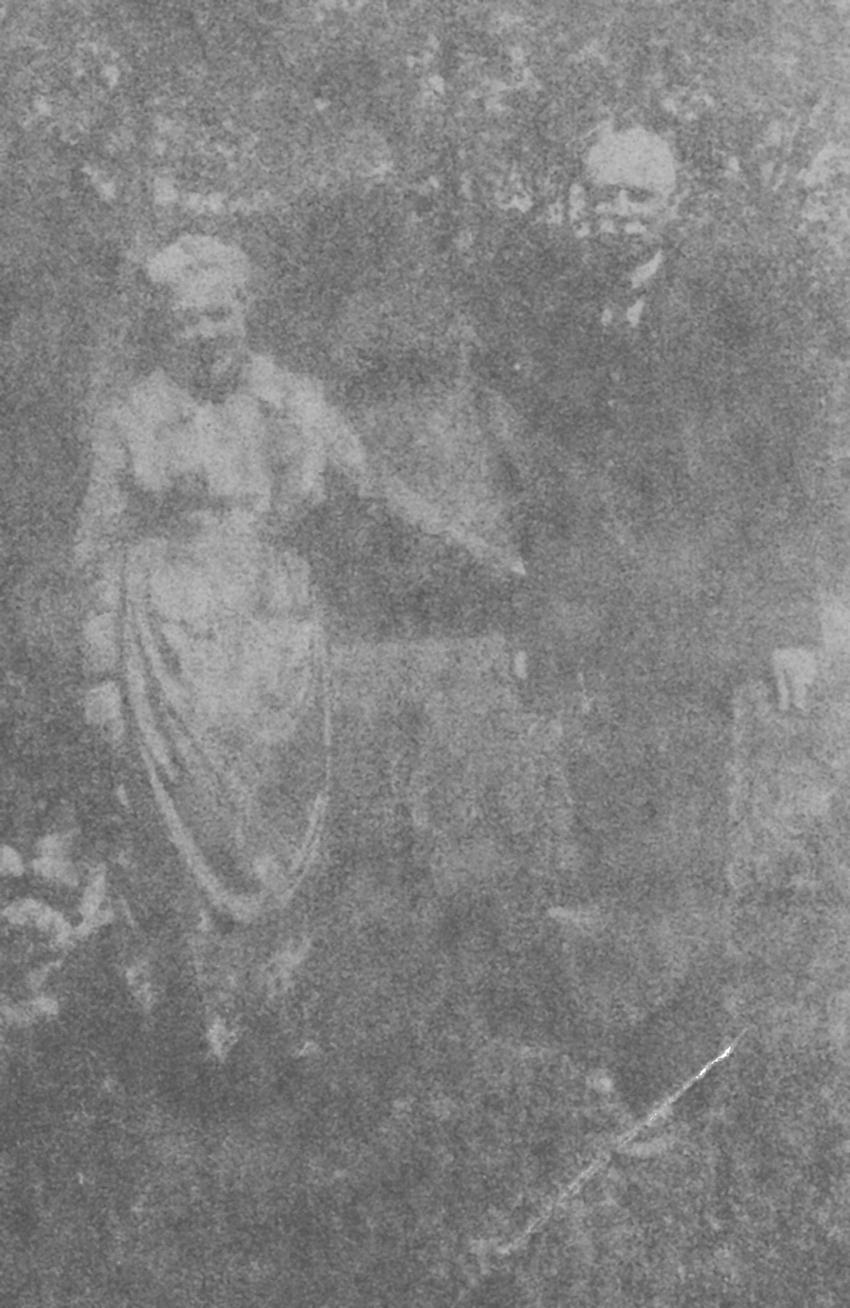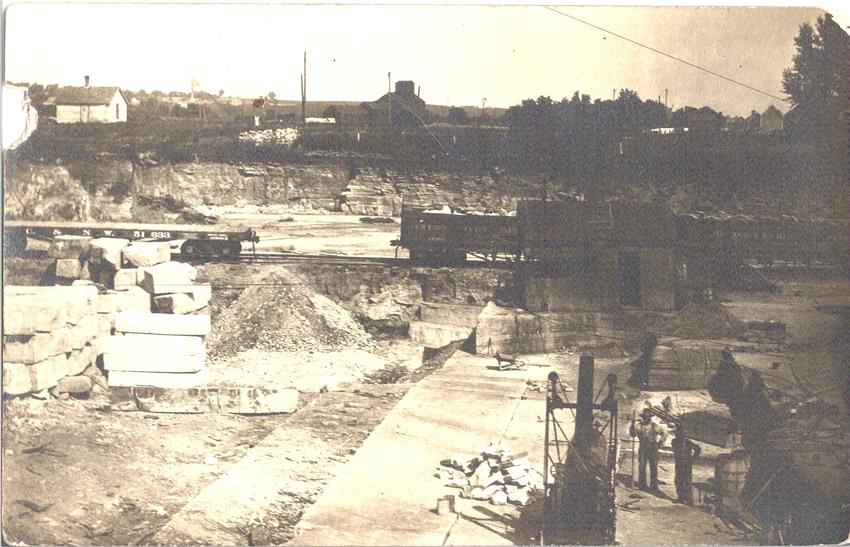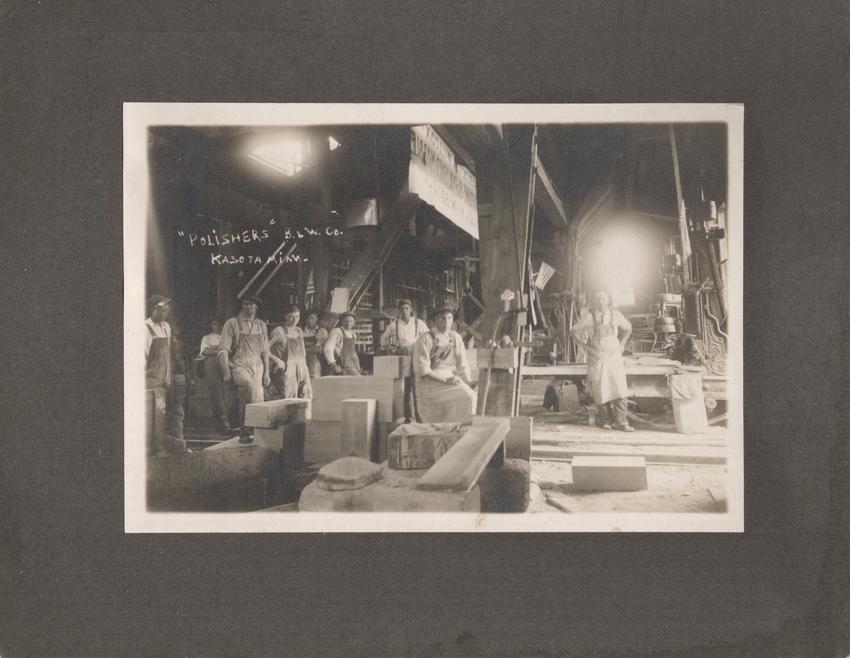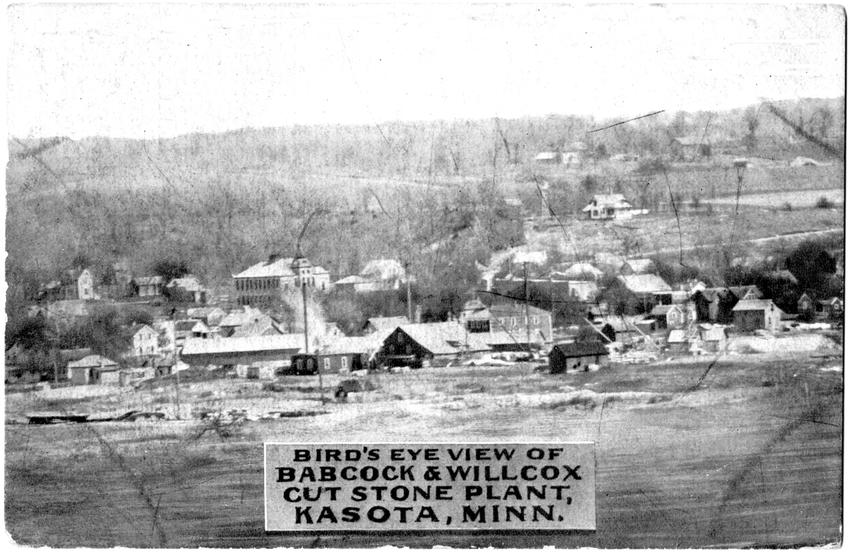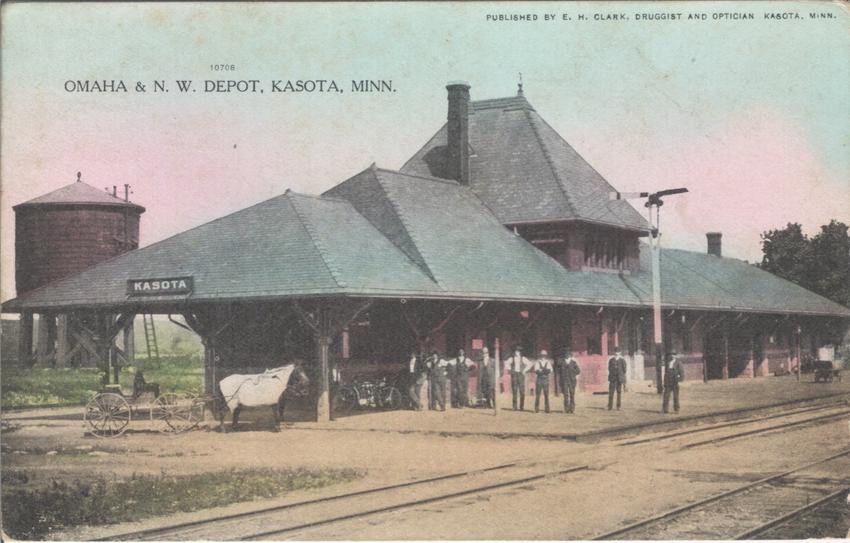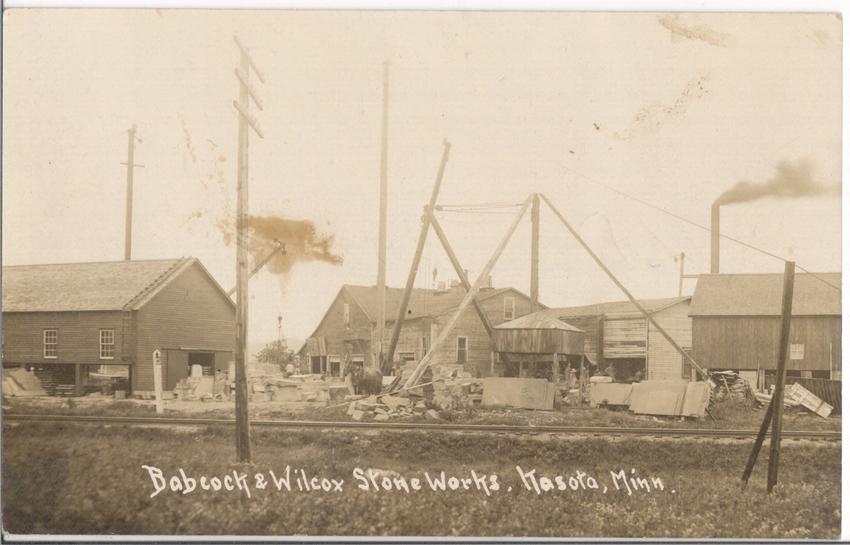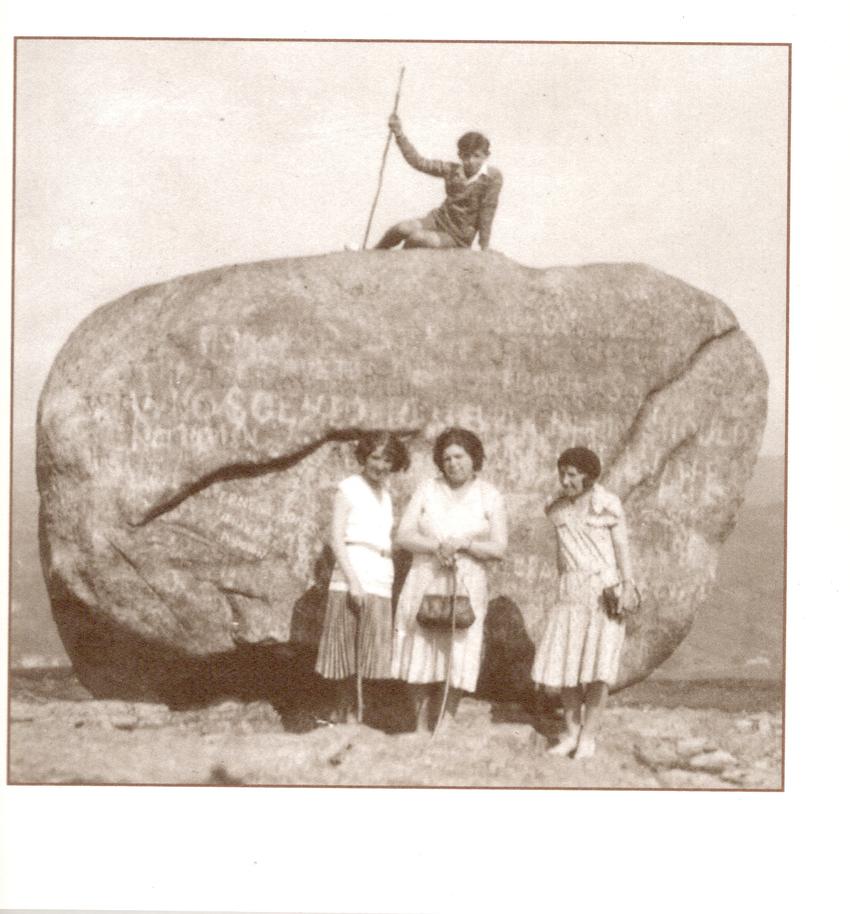
Babcock-Willcox Quarry, Kasota, MN
The stone covering the interior walls of the Minnesota Capitol was dolomitic liestone, which came from the Babcock Willcox Quarry in Kasota, MN. At the time of the statehouse construction, Charles W. Babcock was co-owner of the quarry with Tyrrell Swan Willlcox, who developed the polishing process that gave the stone a look that architect Cass Gilbert so admired that he selected the limestone for the new statehouse.
The Babcock-Willcox Quarry had its beginnings in the mid-19th century with the founding of the village of Kasota by J.W. Babcock. Babcock was the first to begin quarrying Kasota limestone in and around the city of Kasota. The Babcock Company was the chief stone company throughout the early history of the city, and according to the Kasota Historical Society, the relationship between the stone company and the city was less than spectacular. At one point the Babcock Company decided to blast within the city limits. This led to the creation of the park on County Road 21 in the town center, after the company was forced to fill in the quarry near the homes of city residents.
During the 1880's, the stone industry experienced an unexpected boom. It was during this time that Charles W. Babcock took over the business from his father. He began applying modern quarrying methods, and in 1889 he formed a partnership with Tyrrell Swan Willcox, an immigrant from England, who was instrumental in promoting the use of polished Kasota Stone for interior and exterior residential use. Much of the industry's boom was caused by the expansion of the railroads westward, requiring large quantities of stone for trestles and culverts.
In the early 1980s, the Babcock Company went bankrupt. The Vetter Stone Company subsequently bought the Babcock quarries, further expanding the business, which currently operates just outside the Mankato city limits. Information from Le Sueur County Historical Society and http://en.wikipedia.org/wiki/Kasota,_Minnesota.

